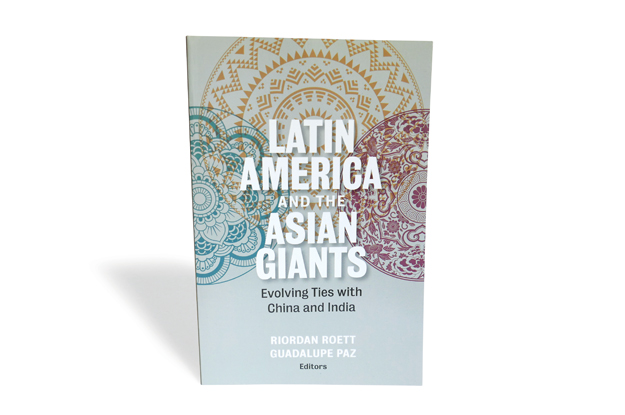Washington’s policies toward Latin America under a Donald Trump presidency have yet to come fully into view, but many in the region wonder — with good reason — about the future of U.S. engagement. The likelihood that the U.S. will play a diminishing role in economic and political affairs in places like Brazil and Colombia has given Asian nations an opening to assert greater influence. This makes Latin America and the Asian Giants: Evolving Ties with China and India especially timely.
Though not written with a Trump presidency in mind, the new anthology, edited by Riordan Roett and Guadalupe Paz, skillfully outlines the range of economic and geopolitical opportunities that will be available to China, India and Latin America in the coming decade, and recommends policy options to ensure that the region’s engagement with these “Asian giants” is of mutual benefit.
Should U.S. appetite for multilateral trade with the region continue to slow, as it has for over a year, Latin American and Caribbean nations will be well advised to take advantage of Asian overtures, the authors write.
Xiang Lanxin of Geneva’s Graduate Institute of International Development Studies suggests that China in particular can serve as a critical counterweight to the U.S. — an argument that has been made by Chinese scholars for many years, but is strikingly applicable in the current political environment. With the U.S. rejection of the Trans-Pacific Partnership all but guaranteed, China’s proposals for an expanded Regional Comprehensive Economic Partnership or Free Trade Area of the Asia-Pacific will no doubt start to look more appealing to some in the region.
India has been comparatively reserved in its engagement with Latin America, hindered in many cases by financial constraints, as Ambassador Deepak Bhojwani notes. But, as Jorge Heine, former Chilean ambassador to India (and current ambassador to China), and Hari Seshasayee of the Confederation of Indian Industry write, the India–Latin America relationship is starting to deepen through joint ventures and other forms of investment.
Nevertheless, the volume’s contributors strike a cautious note overall about Latin America’s “pivot to Asia,” pointing out that both sides of the partnership will need to do a lot more to ensure a fruitful relationship.
The lack of diversity in Chinese economic engagement with the region remains a sticking point for many Latin American countries. India fares better in this respect, although the book’s contributors suggest that Indo–Latin American economic interaction is still focused primarily on energy, mining, information and communications technology, pharmaceuticals and motor vehicles, and on a specific subset of countries. Overall, trade between India and Latin America still pales in comparison to China’s booming figures.
The contributors agree on one major point: Asian trade and engagement with Latin America is set for a boom, driven primarily by the latter’s natural resource endowments. This is especially true as China and India grapple with mounting food and energy security concerns.
Relations will also be shaped by diverse and rapidly evolving domestic conditions, not only in China and India, but also in Latin America. As Roett indicates, recent political shifts in the region have generated new opportunities for economic engagement, but they have also increased uncertainty for a variety of Asian companies.
One key factor will be what the U.S. does — or doesn’t do. If Washington adapts the economic nationalism that played such a large rhetorical role in the last campaign, or narrows its interest to specific security-related issues (such as narcotics control), Latin America’s shift to Asia may be irreversible. The first decade of the 21st century was already “Latin America’s China Decade,” according to contributors Kevin Gallagher and Rebecca Ray. The next decade could belong to the rest of Asia.
—
Myers is director of the China and Latin America program at the Inter-American Dialogue.





